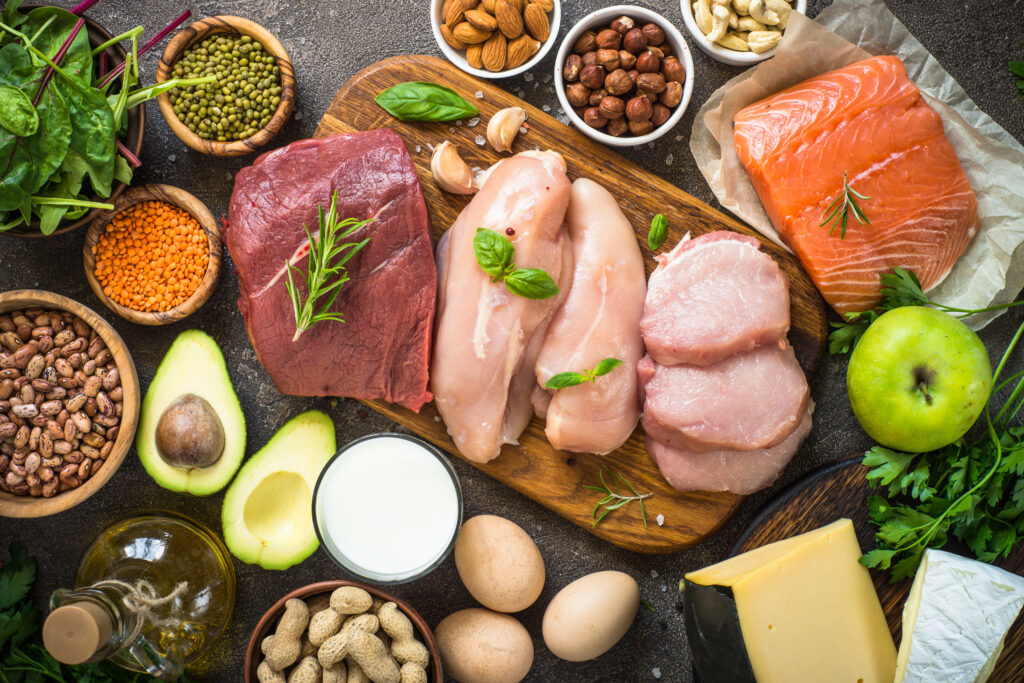Anyone who hasn’t heard about the ketogenic diet must’ve come from another planet. This craze started some years ago as a means to lose weight and speed up metabolism, similar to the Atkins and low carb diets.
This type of diet involves reducing carbohydrate consumption and increasing fat intake to put your body in a state of ketosis – a metabolic process in which, instead of carbs, the body burns fats to use as an energy source.
The appeal of the keto diet is that apart from helping an individual lose weight, it’s believed to ease the common symptoms of serious health problems such as Alzheimer’s and cardiovascular diseases, as well as diabetes.
Ready to start your fitness journey? We’ve rounded up some tips to help you get started.
1. Know your fitness goal
Embarking on the keto diet requires you to identify your man fitness goal(s) which can be any of the following:
· Weight Loss. This is the main reason for the majority of individuals. To achieve your goals faster, attention should be focused on drastically reducing caloric intake. Besides seeing the weighing scales drop, you would need to use a fat analysis tool to measure your progress.
· Enhanced Performance. Ever find yourself easily fatigued with physical activities that you used to do with ease some years ago? A keto diet is said to provide a source of energy that enhances athletic performance, even among endurance athletes. If you want to improve your performance, focus on nutrient timing, and adequate fueling. A metabolic efficiency assessment may be used to determine whether you’re making progress.
· Improved Health. Getting your much-needed vitamins and minerals is not guaranteed with this type of diet unless you focus on eating nutritious food. Research has indicated that a keto diet may have potential favorable effects on diabetes and other cardiovascular diseases.
· Gaining Muscles. A keto diet can also help you gain weight. A word of caution though: You’ll experience a temporary drop in performance and strength as an impact of your body’s adjustment to relying on ketones instead of the traditional carbohydrates to fuel it.
2. Set your daily caloric intake
After identifying your fitness goal(s), use a keto calculator to know how many calories you need daily to achieve your specific health objective(s). As can be gleaned from the calculator, you have to input your age, height, weight, gender, and fitness level to come up with an approximation of your daily caloric needs.
3. Know your keto macronutrients
Aside from calories, you also have to calculate your macronutrient (or macro) needs – which is an umbrella term for carbohydrates, proteins, and fat. All of the calories entering your body come from these macros.
The keto diet is designed to follow strict macronutrient goals, including high fat and extremely low carb intake. The following ratio works best for most people:
- 70% of calories from fat
- 25% of calories from protein
- 5% of calories from carbs
To calculate your ideal macro needs, you have to first determine your calorie, carbohydrates, protein, and fat needs.
4. Expect to have the “Keto flu”
As with other diets, most people who are new to practicing keto reported experiencing symptoms similar to flu, among them lethargy and reduced cognitive alertness, more commonly known as brain fog. These symptoms are temporary and are a result of your body adjusting to the impact of the new diet.
You can ease the discomfort by staying hydrated, getting adequate sleep, and consuming enough fat to last through the day.
5. Get familiar with keto-friendly food
Before loading up on hotdogs, ham, and bacon, be reminded that the keto diet aims to keep you healthy still by incorporating nutritious food. Choosing the right kind of food will help you increase your energy levels, regulate your mood, and control your cravings.
If you’re used to eating grains, breads, and starchy veggies, you may have to start slowly getting rid of them this early.
The kinds of food to avoid are grains such as wheat, corn, rice, cereal, and various forms of sugar like honey, agave, and maple syrup. Forget about eating apples and bananas, as well as potatoes.
Instead, the keto diet encourages an individual to take more of fish, beef, lamb meat, as well as poultry, eggs, and veggies with minimal carbs such as spinach, kale, and broccoli. Hard cheese and butter can be your source of fat, among others.
6. Look for a keto-friendly app
To make it easier for you to determine whether you’re making the right food choices, download and use an app that’s specially made for persons on the ketogenic diet. Typically, these apps let you input your food and beverage intake and measure your activity levels. Some apps suggest which components you need to improve (i.e calorie or macros intake, etc.).
The keto diet is a good diet choice for just about anyone, but there are limitations. Persons with kidney diseases, heart disease, type 1 diabetes, and those with pre-existing liver or pancreatic conditions, are discouraged from trying the keto diet. The same goes for persons who’ve had their gallbladders removed or for pregnant and nursing women.
Key Takeaway
Consistency is key in maintaining your keto diet and health goals. More than strong determination, it requires one to commit to a healthy lifestyle to succeed.

